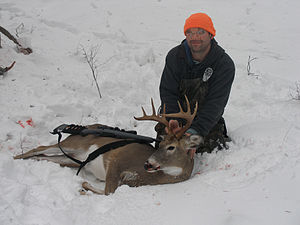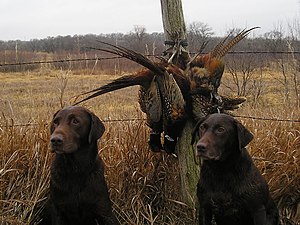Missouri’s unique, citizen-led conservation agency began in November 1936.
JEFFERSON CITY Mo -- The Missouri Department of Conservation (MDC) is celebrating its 75th anniversary through October 2012. Throughout the next year, the MDC-produced magazine, Missouri Conservationist, will highlight the Show-Me-State’s unique, citizen-led conservation story, successful conservation partnerships and programs and future challenges. To read the Missouri Conservationist online or to subscribe, free to Missourians, visit
http://mdc.mo.gov/conmag. MDC will also host anniversary events throughout the coming year at nature centers and other locations throughout the state. To follow anniversary activities, visit
http://mdc.mo.gov/about-us/get-know-us/75th-anniversary.
“Conservation in Missouri is unique,” said MDC Director Robert Ziehmer, “unique in its history, unique in the way it derives its authority and funding from citizens, and unique in the passion, partnerships and commitment of Missourians to perpetuate this legacy.”
Ziehmer added that Missourians have achieved some amazing results.
“Working together, the Department and citizens have restored and conserved dozens of fish and wildlife species,” he said. “We have ensured that Missouri is a great place to hunt and fish, transformed forestry into a sustainable industry, created a system devoted to serving both rural and urban private landowners, invested in the hearts of major urban areas to encourage participation in the outdoors, developed an accessible network of public lands and facilities, and partnered the entire way with citizens and communities throughout the state.”
The need to protect, conserve and sustain Missouri’s fish, forest and wildlife resources began well before the creation of the MDC. During their expedition in the early 1800s through what is now known as Missouri, explorers Lewis & Clark described the stunning abundance and variety of fish, forests and wildlife. However, by the 1860s, our state’s fish, forest and wildlife resources were depleted through unchecked hunting, fishing, logging and burning of land. By the 1930s, the existing Missouri Department of Game was underfunded and largely a token gesture weakened by powerful interests.
These circumstances set the stage for citizen-led efforts to begin the restoration of Missouri’s fish, forest and wildlife resources 75 years ago. In September 1935, Missouri sportsmen met and formed the Restoration and Conservation Federation of Missouri. They drafted an amendment to the Missouri Constitution aimed at creating an apolitical conservation agency and set to work getting it passed. On Nov. 3, 1936, voters approved Amendment 4 to the Missouri Constitution, creating the Conservation Commission and the apolitical, science-based conservation agency with authority over fish, forests and wildlife. On July 1, 1937, Amendment 4 took effect.
“Not in their wildest imaginations could those early sportsmen have imagined what has been achieved,” said Dave Murphy, executive director of the Conservation Federation of Missouri. “On the same landscape, at the same time that our human population has doubled, we’ve seen the restoration of wild turkey, deer, geese, river otters, raccoons, black bass, elk and so much more.”
In 1970, the Conservation Federation of Missouri led an effort to establish dedicated funding for conservation through the Design for Conservation. Passed in 1976, it included a pledge to obtain land for recreation, forestry and protection of critical habitat, increased services to the public in the areas of wildlife and forest conservation, the creation of conservation nature centers throughout Missouri, and funding through the 1/8-of 1-percent conservation sales tax.
This sales-tax revenue makes up 58 percent of MDC’s annual operating budget with no funding coming from the state’s general revenue. Permit revenues from fishing, hunting and trapping account for approximately 20 percent of the Department’s annual revenue. MDC also receives 14 percent of its funding in the form of federal reimbursements from sources including the U.S. Fish and Wildlife Service’s Wildlife and Sport Fish Restoration programs.
Efforts to ensure healthy forests, abundant fish and wildlife and productive waters provide benefits to citizens’ quality of life and the state economy. Today, hunting, fishing and wildlife watching, along with forest industries support about 95,000 Missouri jobs and generate more than $11.4 billion annually to state and local economies.
The Department is led by the Conservation Commission, which consists of four commissioners appointed by the Governor for six-year unpaid terms. Current Commissioners are: Don R. Johnson of Festus; James T. Blair, IV, of St. Louis; Don C. Bedell of Sikeston; and Becky L. Plattner of Grand Pass.

















